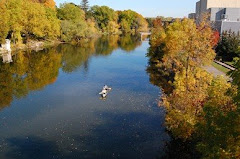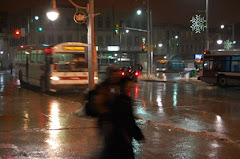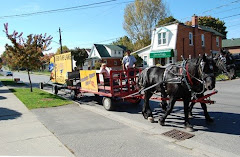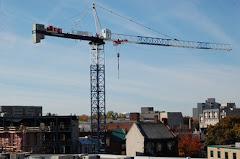This sounds pretty bad. Now I don't know a lot about bugs, and it's never especially been one of my priority research projects, but this is one of the unappreciated aspects of global climate change and our easily mobile society, some pests end up in places they're not supposed to be.
In the case of the Emerald Ash Borer, it's a matter of hitching a ride on the wrong box, boat or plane because they're native to Asia and Eastern Russia. In our region they're highly destructive, and it seems that the only way to stop the infestation from spreading is to literally get rid of the infested tree before the larvae get a chance to hatch. So be on the lookout this summer for these persistent pests.
Here's the city's press release: GUELPH, ON, June 10, 2013 – City Forestry staff have found conclusive evidence of Emerald Ash Borer (EAB) beetle activity in Guelph’s south end. A total of 15 juvenile ash trees have been confirmed as having been infected by the EAB beetle. Those trees are on Hayward Crescent, Boulder Crescent, and City of Guelph greenspace in the Clair Road West and Gordon Street neighbourhood.
Forestry staff will be removing the 15 trees as soon as possible. Tree removal is considered a best practice in mitigating EAB given the age of the affected trees and the stage of the infestation.
All of the trees are on City property. Forestry staff have notified local home owners that EAB impacted trees have been found adjacent to their properties and are scheduled for removal.
“The issue of the emerald ash borer is not new for the City of Guelph. Forestry staff have been tracking the movement of EAB through southwestern Ontario since 2002. In the fall of 2011, four juvenile ash trees in Guelph were confirmed as having emerald ash borer larvae and were removed by City staff. While our monitoring for EAB throughout 2012 showed no conclusive evidence of widespread activity, it was just a matter of time given the close proximity of the beetle in surrounding municipalities,” explained Rodney Keller, general manger of Public Works.
“Research and best practice shows that by removing affected trees before larvae emerge, the speed of the EAB infestation is reduced, particularly at the onset. As per the City of Guelph’s Urban Forest Management Plan, we will make every effort to preserve trees whenever possible to maintain our canopy,” added Mr. Keller.
The Emerald Ash Borer is a highly destructive, non-native, wood-boring beetle that feeds under the bark of ash trees. It was first discovered in Canada in 2002.
To learn more about the emerald ash borer, visit guelph.ca.

















No comments:
Post a Comment